While not a conventional choice, there are individuals who find living underground intriguing. It offers a unique and captivating alternative to traditional homes. Whether driven by personal style, individual preferences, or a desire to recreate a cinematic experience, residing in one of these underground dwellings is undoubtedly an extraordinary experience. What’s surprising is how remarkably similar these homes can be to the familiar residences we are accustomed to.
1. An underground eco home by Make Architects.
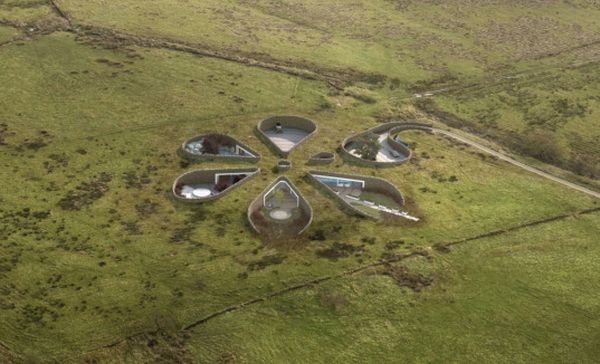
Make Architects designed this exceptional structure for renowned British football star Gary Neville, seamlessly blending aesthetics and functionality in a novel manner. Spanning an impressive 8,000 square feet, the residence deviates from the conventional by embracing a single-story underground design. The primary objective of this architectural endeavor was to craft a home that would optimize energy efficiency while embodying an eco-friendly alternative to traditional housing.
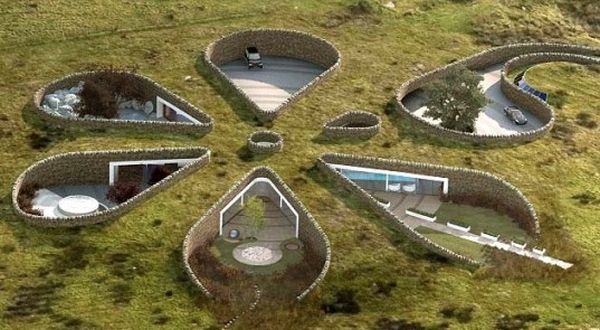

The house was built with locally-sourced materials and using traditional building methods and a ground source heat pump provides heating while the photovoltaic panels and the on-site wind turbine generates renewable energy. The house is almost entirely built into the hillside and this allows it to seamlessly integrate into the surroundings.
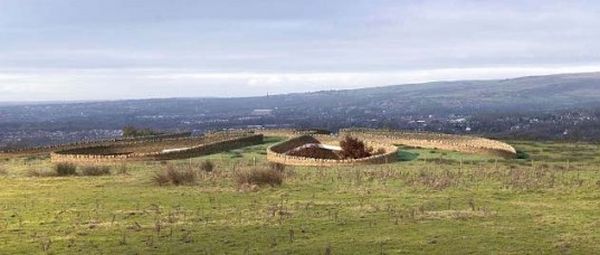
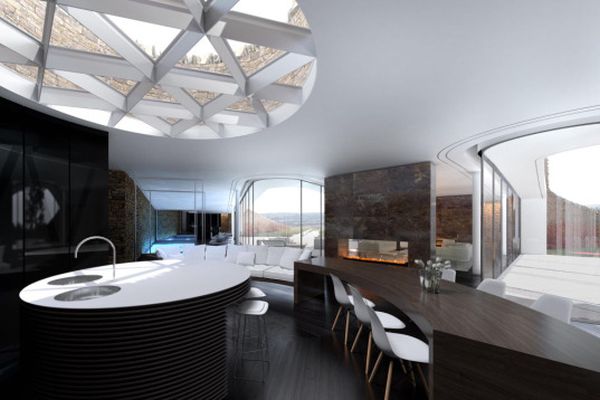

The architectural layout of the house takes inspiration from the form of a flower, with rooms arranged like petals around a central kitchen. This intentional design choice is not arbitrary; in fact, it is further emphasized by a luminous floral impression that emerges when the house is illuminated at night. The remarkable fusion of natural elements and artificial craftsmanship is truly captivating. Witnessing the harmonious blend of nature and human ingenuity in this project is both intriguing and aesthetically pleasing, showcasing the beauty that arises from their seamless collaboration.
2. Underground home with an elliptical shape and Alpine views.
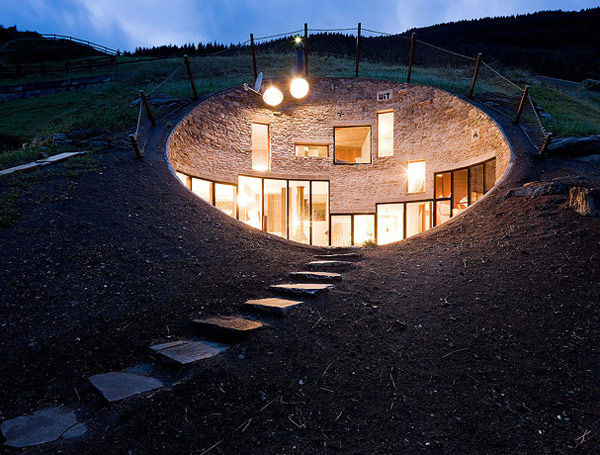
Situated in the Swiss village of Vals, this underground home, a product of collaboration between Dutch architects from SeARCH and Christian Muller Architects, seamlessly integrates with its hillside surroundings. Despite being nestled within a cluster of mountain houses, its inconspicuous nature goes beyond mere camouflage.
The house’s discreet presence is not solely attributable to its blending with the landscape. There are additional factors contributing to its unobtrusiveness, making it easy to miss at first glance.
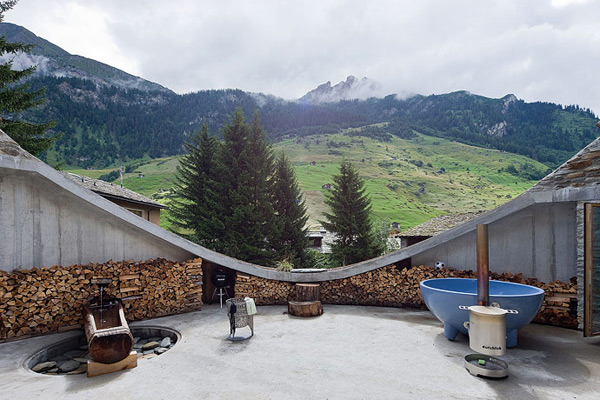
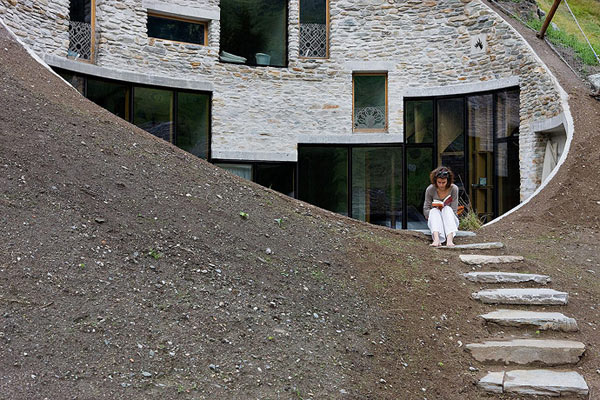
The house is basically a stone structure and it has been built into the hillside. It has two entryways. One of them, the main entrance, reveals large outdoor entertainment areas while the second one is from a nearby barn and leads you though an underground pathway. The circular opening contains lots and lots of windows and it’s a way of introducing light into the house while also providing views towards the exterior.
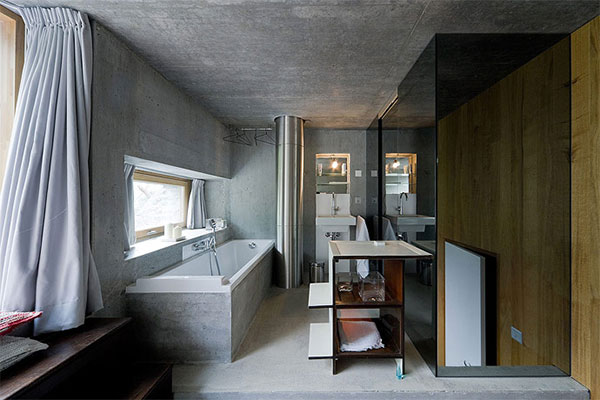

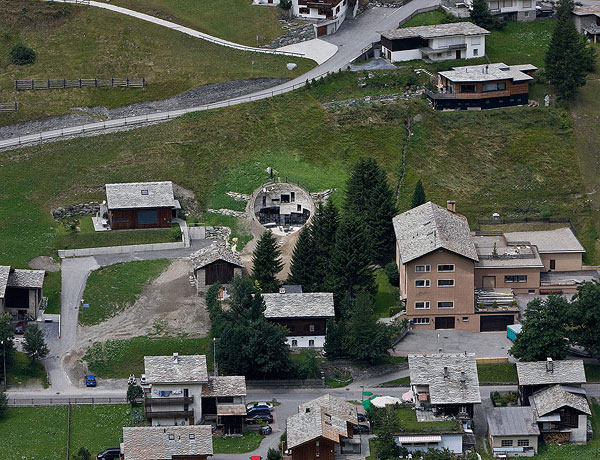
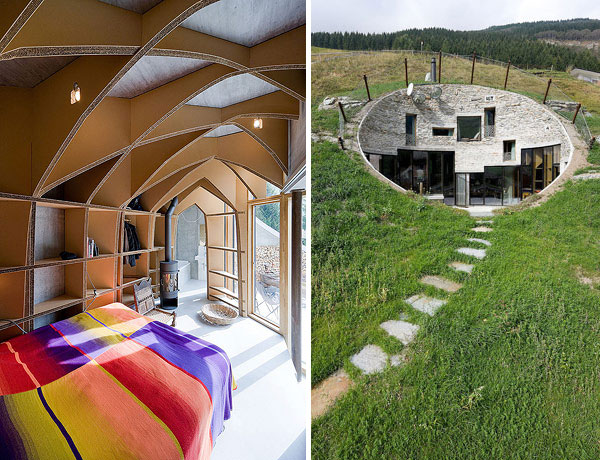
Even though it’s an underground home, it’s very bright and has plenty of natural sunlight. Also, it provides amazing mountain views and maintains a high level of privacy for its inhabitants. It’s an interesting option for a stone house and, even though it’s easy for it to go unnoticed, it’s also a surprising and stunning discovery for anyone who sees it.
3. Woodlyn Park, home to the world’s first hobbit motel.
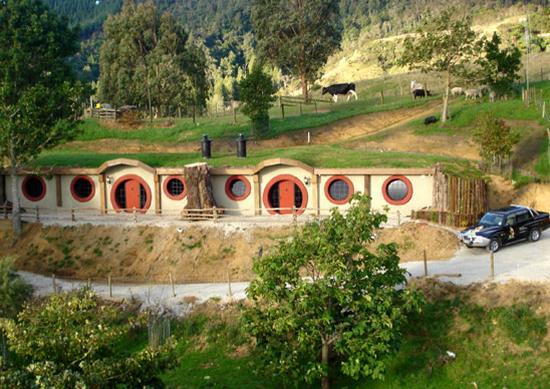
When the concept of underground homes is mentioned, it’s almost impossible not to conjure images of the iconic hobbit village. This imaginative depiction of subterranean living has served as a significant inspiration for many individuals. Enthusiasts have sought to recreate the charm of those cozy hillside dwellings, resulting in the creation of unique and remarkable structures. Among them, the world’s first hobbit motel stands out as a noteworthy example, located in Woodlyn Park on New Zealand’s North Island.
Originally established as the sole motel with a U-drive jet course, it later transformed into the world’s inaugural hobbit motel. Constructed using polystyrene blocks, this innovative insulation technique ensures that each room remains cool in summer and warm in winter. The use of such unconventional materials adds to the distinctiveness of this project, making it an interesting and effective experiment in creating a truly unique accommodation experience.

Surprisingly, the rooms are quite spacious. They are also very well furnished and feature high-quality details. Each structure has its own kitchen and shower and each unit can accommodate up to 6 people. The motel also offers a bar and a restaurant and its guests can also enjoy lots of adventures during their stay here.
4. An eco-village in Preseli mountains of west Wales.
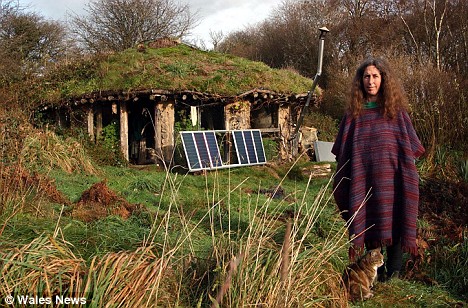
In the Preseli mountains of west Wales there are lots of different areas and all sorts of homes. But this village is by far the most interesting. This is an eco-village and it has huts made of straw and mud that have been built into the hills. The houses look very interesting and very charming. Besides having these eco-friendly homes, the people living here also generate their own power and grow their own food.
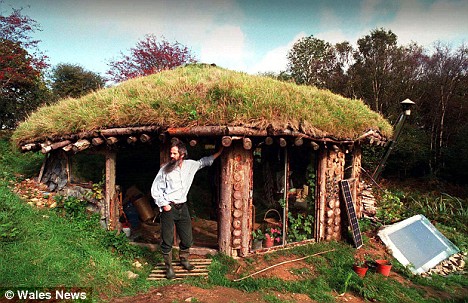
This unique community was set up in 1993 and has remained a secret for several years. The village was discovered in 1998 when sunlight was seen glinting off a solar panel that was placed on the main building. A pilot saw the reflection and reported back but, at that time, the officials couldn’t find any records of anything being built there or any planning permission for the village. The houses were very well camouflaged and surrounded by trees and bushes.
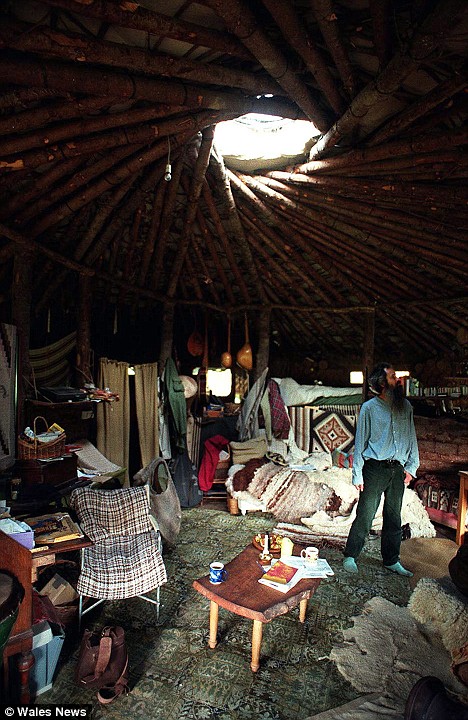
After that a dark period came for the 22 villagers living there. Bulldozers came to demolish their homes but now they can finally enjoy the lifestyle they love thanks to the planning approval they got for the houses, lavatories, agricultural buildings and workshops.
5. The houses from the Hobbiton scenes of the Lord of the Rings.
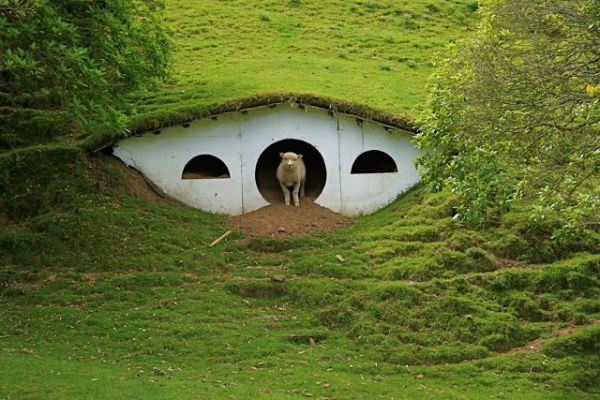
As we’ve mentioned before, it’s impossible to think of any house built into the hillside without comparing it to the ones from the Lord of the Rings trilogy. Those hobbit houses have become a great symbol and have inspired lots of projects. But if you want to see the real houses from the movies and not replicas, you can go to Matamata in New Zeeland.
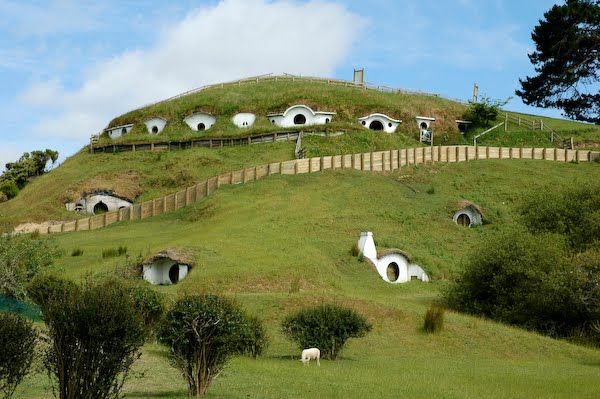
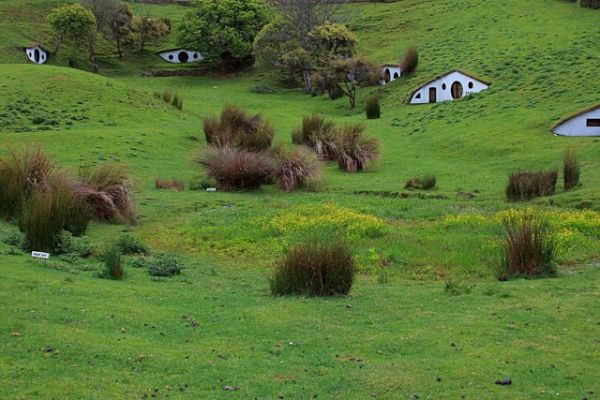
This was the place where the scenes from Hobbiton were filmed and, after the film was finished, the farm asked if some of the hobbit homes could be preserved and used as attractions for the tourists. Everyone agreed it couldn’t hurt anyone so the houses remained there. Of course, you can’t expect these houses to look exactly like in the scenes from the movies. The scenes inside the hobbit houses were never even shot here but in a studio.
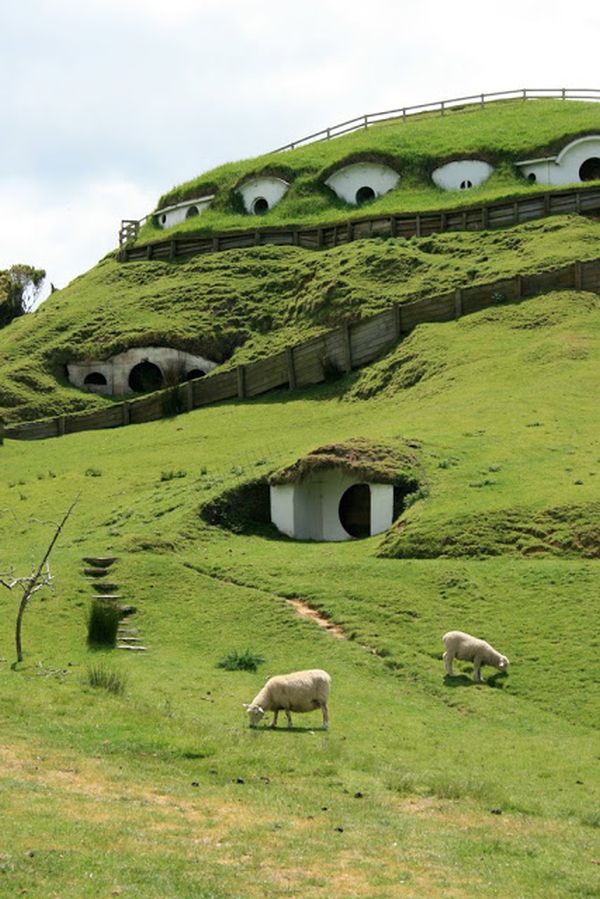
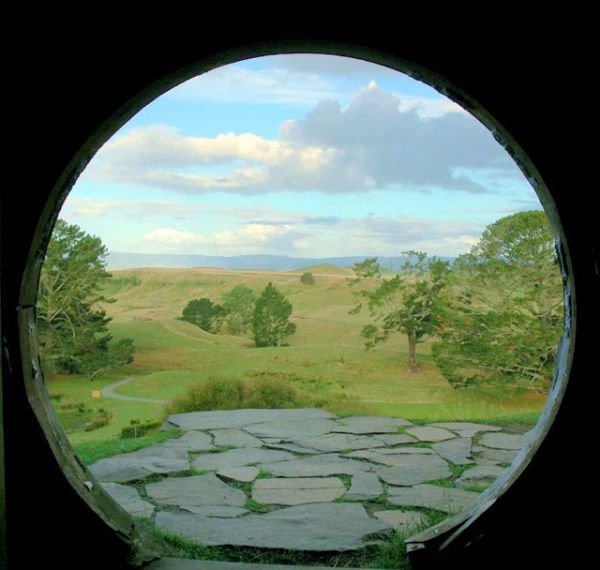
These hobbit houses are not furnished and they look more interesting when seen from far away then from up close. But if you use your imagination you can be transposed into the Hobbiton from the movie. The sheep looks like it has everything figured out.
6. The eco-friendly Bella Vista Hotel in Italy.
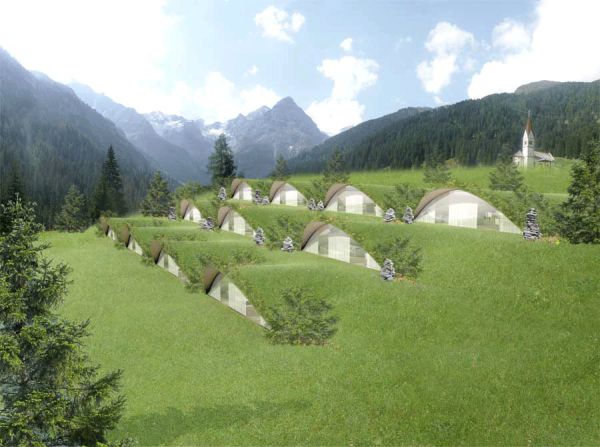
Lately there’s been a burst of energy and ideas when it comes to eco-friendly creations. Lots of people have opted for sustainable designs for their private homes and even larger projects have been designed. There are many eco-friendly hotels that have emerged or that have been redesigned. The Bella Vista Hotel is just one of them.

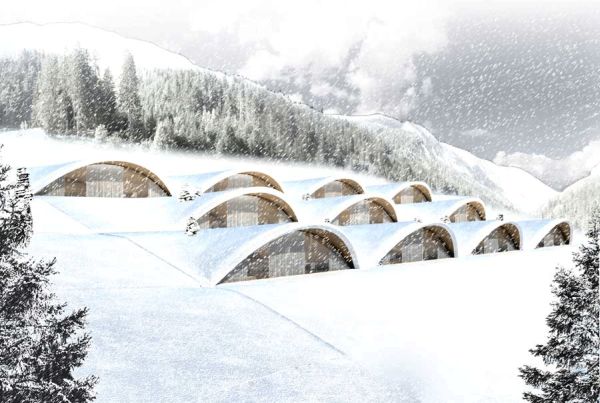
This is the latest KlimaHotel© and it can be found it Bozen, Italy. It’s a redesign of the Bella Vista Trafoi and it’s the first KlimaHotel© eco-friendly hotel. It was designed by Matteo Thun and focuses on sustainability and ecology. The project included the creation of 11 individual hostels. These were built into the hillside starting with 2009.
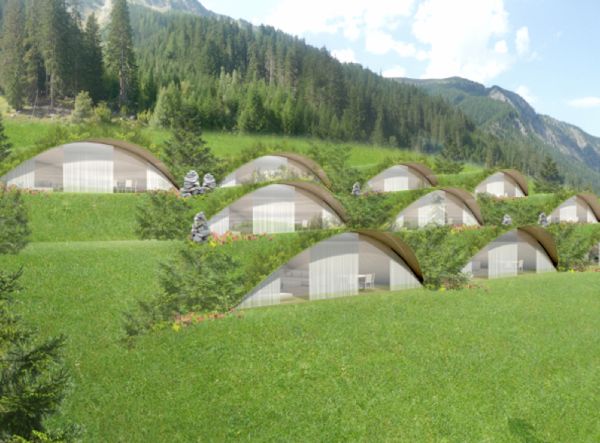

All these structures feature eco-friendly and sustainable heating, cooling and building methods. Local resources were used as well as materials from the nearby areas. As for the architecture and design of these hostels, they were strongly influences by the local culture. The focus was on creating a strong connection with nature, on trying to combine natural and artificial elements and to create a harmonious image. It’s an ambitious project that has attracted lots of admirers.
7. A home built in a cave in Missouri.
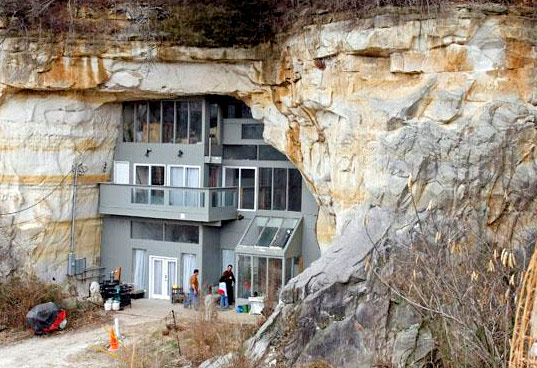
Most underground homes or structures are built into the hillside, following the model offered by the Lord of the Rings movies. But there are also other possibilities to explore. For example, a cave would be a very logical and simple solution. It’s most likely the starting point of all modern homes so now it’s fun to go back and to transform the concept into something unique.

This wonderful home can be found in Festus, Missouri and was constructed inside a 15,000 square foot sandstone cave. It was built by Curt and Deborah Sleeper and has become their cozy home. The interior is very modern and features unique textures such as the unfinished sandstone walls that give it a beautiful charm.
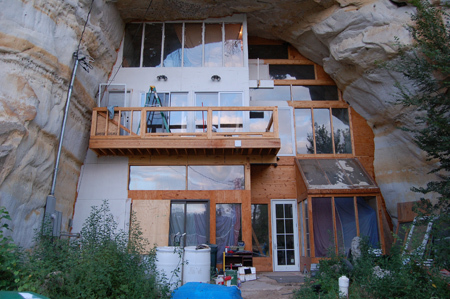
Not only that the location for this home is unusual and unique but there are also other details that make it a great example to follow. This structure is also an energy-efficient house that has geothermal heating and a smart design that eliminates the need for air conditioning. The cave home has three rooms or chambers, all with unfinished walls. This is the type of home that guests would love to visit and that would be similar to a museum in a sense.
8. Organically-shaped earth houses by Peter Vetsch.
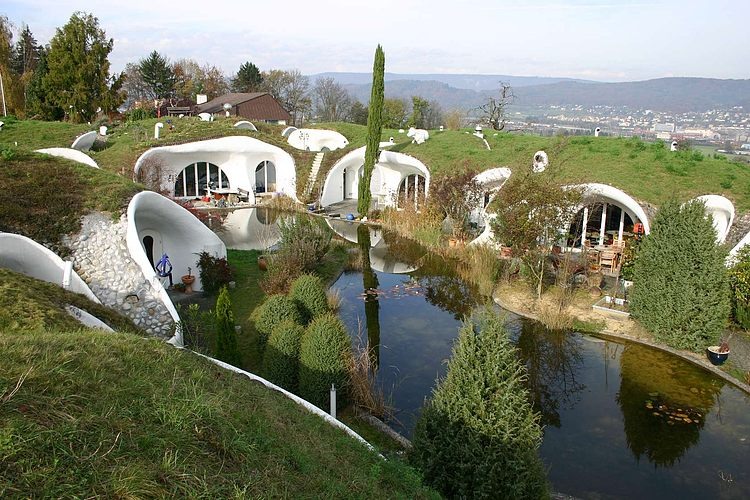
Situated in Dietikon, Switzerland, the Earth House Estate Lättenstrasse showcases a distinctive and innovative approach to eco-friendly and progressive architecture. Renowned architect Peter Vetsch spearheaded the design of this extraordinary development. Comprising a total of nine houses, each underground structure offers a new and original concept.
The estate encompasses a range of house sizes, catering to different needs. It includes three-bedroom residences, as well as one with four bedrooms, another with five bedrooms, and three homes with six bedrooms. Additionally, an impressive seven-bedroom structure is part of this remarkable underground community. The diverse accommodation options within the Earth House Estate Lättenstrasse demonstrate a commitment to both sustainability and thoughtful living spaces.
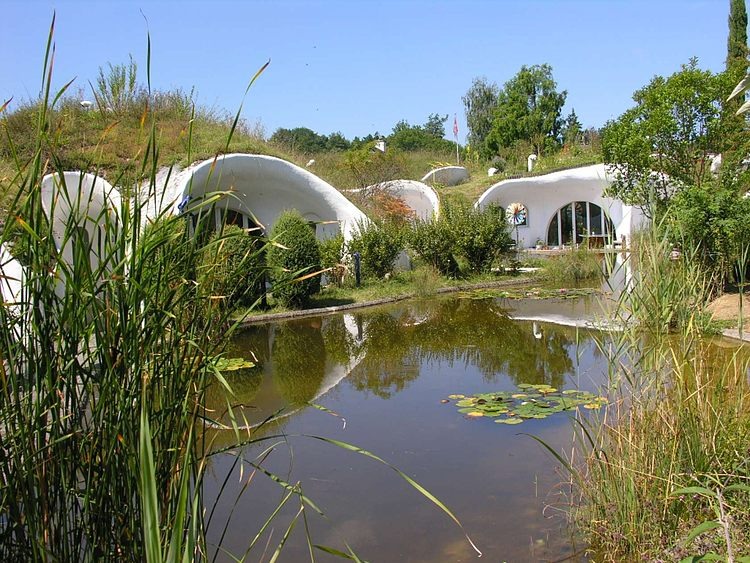
The houses are larger then they seem and that’s mostly because they are almost entirely covered with earth and grass. They seem to emerge out of nowhere and they are quite similar to the other structures built into the hillside that we’ve presented so far. The houses are grouped around a small artificial lake.
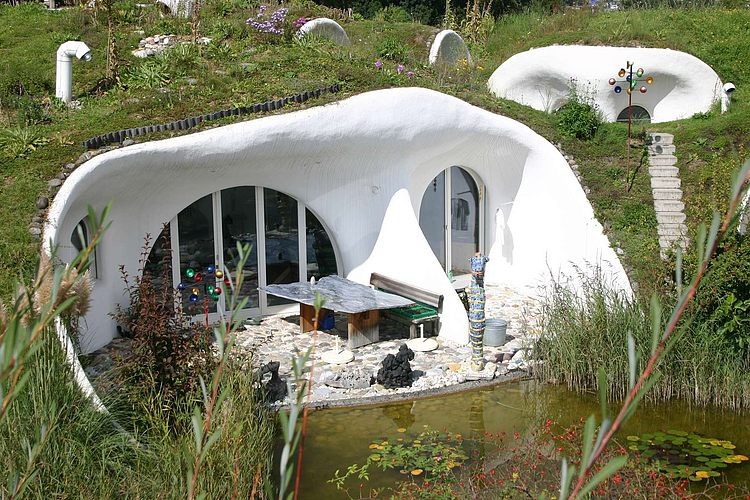
All the homes use the earth as an insulating blanket that provides protection from heat and cold but also from rain and wind. The organic shapes of these structures allow them to naturally integrate into the surroundings and to become a part of the landscape. However, these houses don’t necessarily have to be built underground. They can also be placed on naturally grown terrain, although the effect wouldn’t be the same.
9. The Malator house on the Welsh coast.
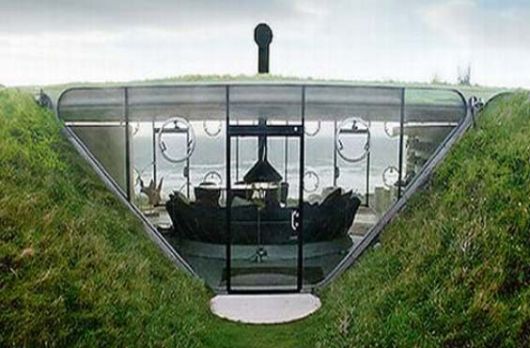
Most underground homes that are built into the hillside have lateral openings that represent the entrance and that make them visible. However, it’s not exactly the case for this home. This is the Malator house and it’s located on the Welsh coast. It’s very difficult to find it when you don’t know exactly its location because the house almost disappears entirely into the ground.
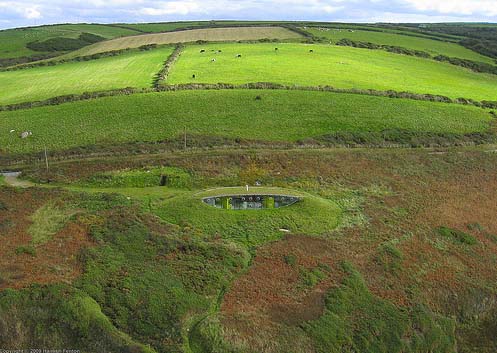
The house was a project by Future Systems. It was built into its own man-made mound and it situated at the top of the hill. This location allows it to benefit from wonderful and panoramic views of the landscape and the design allows you to look through the house to the coast of Wales. The house is not just an odd structure placed in a strange area. It also has an eco-friendly side that goes perfectly with its design.
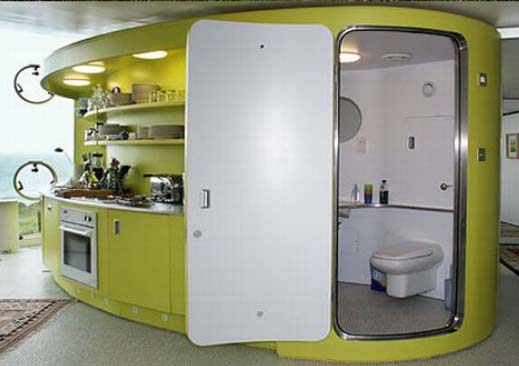
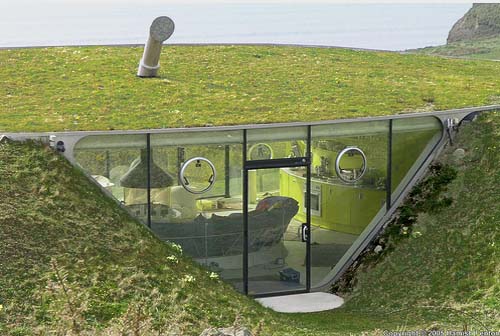
The house is almost entirely underground for passive energy control and the front is wide open. On both sides there are round portholes set into the glass. The Malator house almost disappears into the landscape and integrates beautifully into the surroundings. It establishes a very strong connection with nature and this allows it to integrate in nature even better.
10. The Aloni House in the Cycladic Islands.
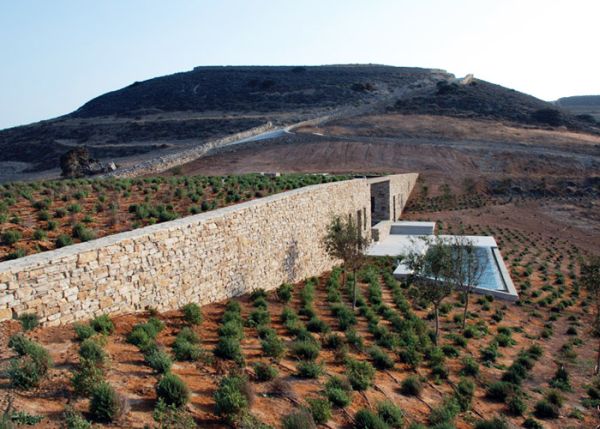
One way of making your home integrate into the landscape like it was part of it is to use the materials found in the area for the construction and to make the house disappear into the scenery. It’s why most hillside houses we’ve presented have been built into the hill and using locally-sourced materials such as stone or wood.
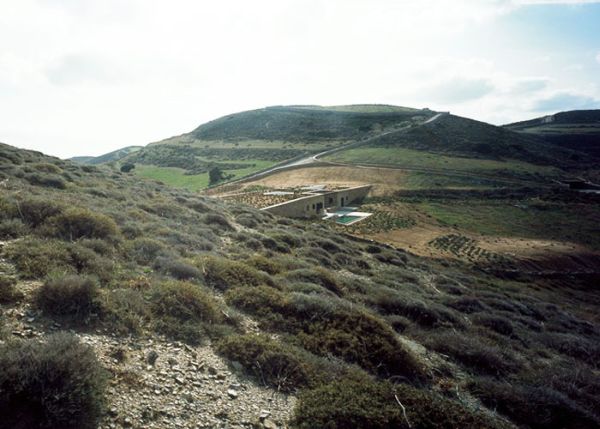

The Aloni house, while based on similar architectural principles, stands out due to its unique location in the picturesque Cycladic Islands. The design of the house was influenced by the surrounding landscape, characterized by earth walls and agricultural fields. In response to this context, the team at Deca Architecture made a conscious decision to embrace a traditional typology for this project.
By adopting a traditional architectural approach, the Aloni house harmoniously integrates with its natural surroundings, paying homage to the local heritage and culture. This thoughtful design choice ensures that the residence not only blends seamlessly with the landscape but also embraces the traditional charm of the area, creating a cohesive and visually captivating living environment.
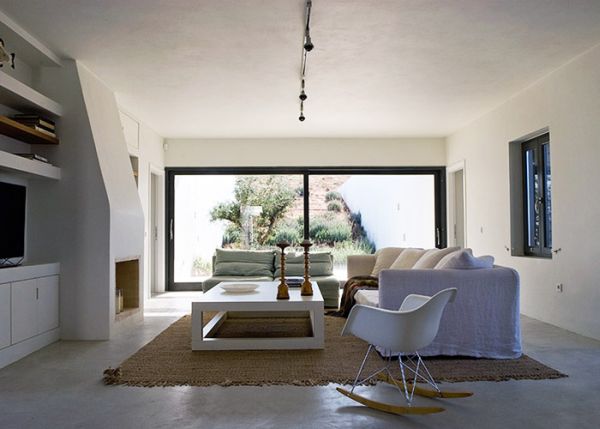

They used materials that have a low impact on the environment while also being very efficient as insulating materials. The house is a single-level structure and has a surface of 240 square meters. It has wall made of retained earth that regulate the temperature and a green roof that also provides insulation while also helping the house disappear into the scenery.
Source: special68





